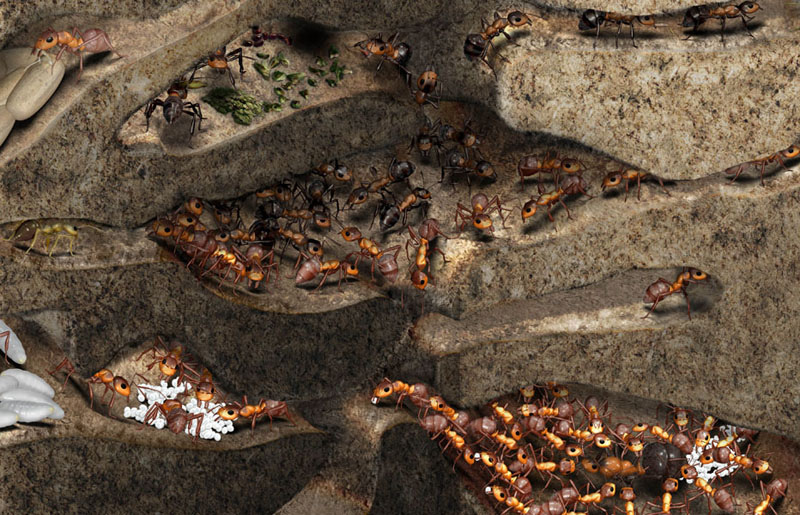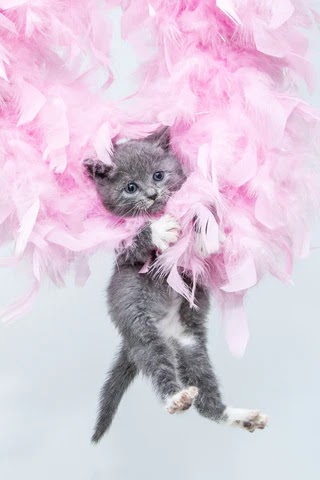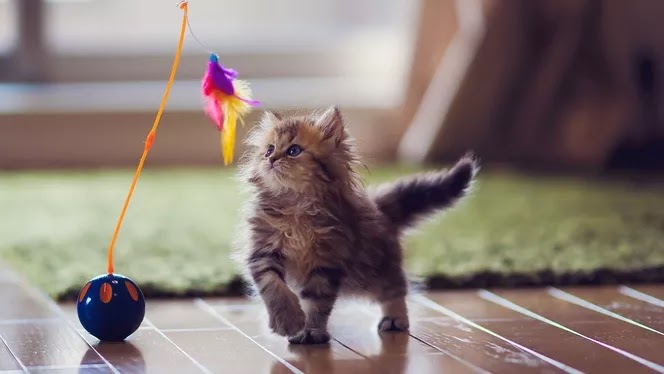12
Reasons why tuxedo cats are Awesome
Introduction
The James Bond of the cat world is a tuxedo cat. These
cats appear extremely fashionable and well-dressed as if they were donning a
black and white suit. One of those uniquely attired cats with black and white
patterns that resemble men's formal clothes is the tuxedo cat. The term
"Tuxedo cats" refers to a coat pattern that certain cats have; it
does not relate to a specific breed of cat.
Even though the Tuxedo cat is not a breed, several cat
breeds frequently exhibit the tuxedo pattern. They come in many cat breeds,
thus the breed will have varied attitudes and dispositions. The distinction of
being known as the gentlemen of the cat world belongs to tuxedo cats. A tuxedo
cat contains both male and female cats, each with its distinct personality
qualities.
The personalities of tuxedo cats are distinctively
endearing and friendly. The following are some justifications for why you
should buy a Tuxedo cat and why they are awesome.
1.
Iconic Black and White Design
The Tuxedo cat is consistently well-dressed. These
gentleman cats have an appealing appearance, as though they are always dressed
in formal wear. These tuxedos would undoubtedly take home the title of the
best-dressed cat if there were a contest. These cats are bi-coloured by nature;
they mostly have a black coat with white spots on their chest, paws, tummy, and
chin. Some Tuxies sport distinctive bow ties and white cheeks.
One highly uncommon sight among cats is the black
moustache that certain tuxedo cats have as part of their markings, which makes
these gorgeous-looking felines even more alluring and seductive. The Tuxedo
with a bow tie is the most attractive. Remember that the Tuxedos are always
appropriately attired, and unlike other cats, their charming personalities and
good looks will win you over for good. Everywhere they go, the Tuxedo's dapper
appearance draws attention.
2.
Tuxedo cats are smart
Every cat breed has a distinguishing appealing trait
that sets it apart from the others. Any breed of tuxedo cat is exceptionally
clever. The majority of owners of these stunning felines would attest to their
intellect. They are smarter than the typical housecat. Their degree of
intelligence has not been investigated or put to the test; rather, it has only
been established via the activities and observations of thousands of their
owners. The owners wouldn't tell a lie.
They possess double the intelligence of a typical
domestic cat. Anyone who has had both a tuxedo and a typical cat will undoubtedly
recognise the differences. Many of them have asserted that the intelligence
exhibited by these black and white cats is astounding. They are intelligent
because they show interest in everything happening around them. Additionally,
it has been shown that in households with a regular cat and a tuxedo cat, the
tuxedo cat's influence has helped the regular cat's IQ increase by at least
15%.
3.
Tuxedo cats have lovely characteristics
The Tuxedo cats have certain lovely characteristics
that are exclusive to this cat. On the vernal or diurnal equinox, the Tuxedos
became unseen, which makes them magical. It seems that most lottery winners
have had these stylish felines because they bring luck. The Tuxedo cats often
have open eyes at birth. Although most cats detest the water, with a few
exceptions, the Tuxedos are the finest swimmers in the cat family.
Great scientists and figures like Beethoven, Sir Isaac
Newton, and William Shakespeare all had Tuxedo cats as a mark of their
brilliance. Compared to other cats, they are quite noisy and very active. They
adore being cuddled and will gladly take pleasure in the experience.
Additionally, President Clinton had a tuxedo named Socks and even spent time
with him in the White House. Tuxedo cats make up more than 70% of the cats
found in Egyptian tombs.
4.
A special gene in tuxedos gives them the appearance of being two colours.
Tuxedo cats are categorised as bi-coloured or piebald
cats genetically. Not only are there black and white cats with tuxedo markings;
but there are also cats of different colours. These different-coloured Tuxedo
cats are far less desirable, claim their owners. The white spotting gene, which
is a dominant gene, is what generates the beautiful patterns seen in tuxedo
cats. In areas where white appears, this gene hides the cat's true colour.
These cats are known as black tie cats if you see one
with a black patch on its white breast. These felines are said to bring good
fortune and joy. Although the tuxedo pattern is not exclusive to black cats,
black and white cats are typically given the term. True tuxedo cats should have
a full black coat with white hair restricted to the throat, chest, belly, paws,
and occasionally the chin. The skin tone can also be bicolour.
5.
Tuxedo felines are related to the arts
One of the key justifications for allowing the tuxedo
cats to participate in the Metropolitan Opera concerts is their formal costume
appearance, which has gained them worldwide renown. The midnight antics of the
Tuxies have been generally regarded as serving the inspiration for "The
Blues" musical genre. Beethoven and Sir Isaac Newton both kept tuxedo
cats, as did William Shakespeare. The earliest "Lassie" tales
featured a Tuxedo cat named Lassie.
A Tuxedo cat was Sylvester from the well-known Looney
Toons animation. The tuxedo's distinctive and sophisticated formal look has
caught the attention of many individuals working in the world of art. Numerous
artists throughout the world have used these adorable kittens in their works in
a variety of styles and shapes due to their distinctive colour patterns and
endearing nature.
6.
Ancient Egypt once worshipped tuxedo cats
Cats have had a significant impact on ancient Egyptian
life. They were revered and well-known for being house pets. Most black cats
were revered for a variety of reasons across the world. More than 70% of the
cats in the Egyptian royal tomb are tuxedo cats, which were adored in ancient
Egypt.
Ancient Egyptians worshipped tuxedos because they were
believed to bring prosperity and riches. This demonstrates how well-liked
Tuxedo cats were throughout history. In ancient days, people regarded these
gorgeous cats in great regard, and there is still evidence of this in the form
of several pictures and other discoveries. These cats were the best crop guardians
and guarded the grains against vermin.
7.
Among all cat breeds, tuxedo cats are the finest swimmers.
Like all cats, the Tuxedo cat despises and avoids
contact with water. A tuxedo cat, however, has a superior swimming ability to
other cats when placed in water. In the cat family, they are the finest
swimmers. These cats are superb swimmers because of their athleticism and
strong rear legs, but they wouldn't want to demonstrate their prowess by diving
into the water on their own. The breed also affects a cat's propensity for
swimming, however, among all cat breeds, tuxedo cats are renowned for having
superior swimming skills.
Numerous cat owners have mentioned that their tuxedo
like the water and enjoys relaxing in the bathtub. When inside, cats play
joyfully with the faucet, often meow at it, and like seeing the water come out
of it. Bicolor cats are caused by the piebald gene, which is present in several
cat breeds including the Turkish Van. These cats adore the water, and they like
to play in it.
8.
Tuxedo cats are beneficial to your mental and physical wellness
Tuxedo cats are affectionate and like connecting with
people. Since they are such loving cats, they enjoy cuddling up in your lap
simply to be petted. They are sensitive to your feelings and will act in line
with them. They will cuddle up to you and give you that feline warmth and
gentle purrs that will calm your thoughts and act as therapy when you are
depressed or upset.
The manners in the hospital are astounding. They are
very patient and won't mind if you snap at them because you are in pain,
whether it be physically or mentally. They will cheerfully snuggle close to you
and accommodate your sleeping preferences. They are the ones who will patiently
hear all of your problems without responding in kind.
9.
Tuxedo cats are friendly
Owners of tuxedo cats have all praised these cats for
being simply fantastic. They claim that these cats have wonderful
personalities. The temperament of a tuxedo cat is greatly influenced by its
breed, however, most of them are well recognised for being affectionate. They
have a laid-back personality. Most of the time, they are content and joyful,
and their personalities are quite dog-like. They attempt to express their love
and care for you by giving you regular hugs and rubbing their head against your
legs. They are caring and sensitive to their family.
10.
Famous tuxedo cats
The tuxedo cats are well-known in a variety of other
contexts than the actual world. Sylvester the cat from the well-known animated
series "Looney Tunes" is the most well-known tuxedo, and who doesn't
remember Sylvester and Tweety? Every time we've turned on the television, he's
made us laugh a lot. The Cat in the Hat by Dr Seuss and Felix the Cat from the
1920s are two other stories with tuxedo cats as characters. Tuxedo cats are
mentioned in T.S. Eliot's Old Possum's Book of Practical Cats, where the author
calls them Jellicles. A relatively well-known term that is still in use today
is "Jellicle."
11.
Athletic tuxedo cats
Cats are naturally active and nimble. The breed has a
significant impact on this particular characteristic of cats once more. In
general, tuxedo cats are robust, athletic, and have extremely high metabolisms.
The fierce appetites of these bicolour cats are necessary to match that type of
metabolism. Because of their great metabolic activity, these cats maintain a
healthy weight while having a voracious appetite. They are always active and
nimble. Only as they age, become less active, and lead sedentary lives do these
cats tend to gain weight.
To capture one of their toys, they may easily leap into
the air and flip backwards. It's remarkable how these cats will bring the toy
back to you and place it on your lap. If you are dozing off, they will drop it
on your face and meow aloud to get your attention. You should bring a tuxedo
cat home if you enjoy a dynamic and active atmosphere all year round. These
felines know how to make you smile and have fun.
12.
They are Naturally beautiful
Who doesn't enjoy looking at pictures of cats in
tuxedos looking sharp for a formal event? They seem nice in every picture
thanks to their eye-catching contrast colour patterns and all-around stylish
appearance. A tuxedo cat would make a perfect subject for a portrait. All cats
are essentially photogenic. Cats have a unique photographic flair. Tuxedo cats
are adorable in any position, whether they are lying down, sitting, playing, or
sleeping, especially as kittens.











.jpeg)













